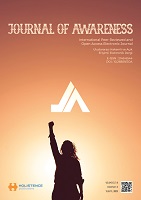Target of information disorder: Syrians under temporary protection in Turkey
Target of information disorder: Syrians under temporary protection in Turkey
Author(s): Apak Kerem AltıntopSubject(s): Communication studies, Higher Education , Migration Studies, ICT Information and Communications Technologies
Published by: Rating Academy
Keywords: Syrians under Temporary Protection; Higher Education; Turkey; Information Disorder; University;
Summary/Abstract: Information disorder can be presented as a problem in this age of accelerating digitalization and communication. For this reason, research on this concept is important in terms of deepening the subject. In this research, a study was conducted on the university entrance practices for Syrians under temporary protection in Turkey. The allegation that Syrians entered the university unconditionally and without examination has been examined through the students and graduates of university life in Turkey in 2016 or later. How these students or graduates acquire, evaluate, interpret, share and confirm relevant information is examined. The study’s methodology was qualitative. The target audience is chosen to be undergraduate students currently enrolled in universities or 2016 graduates and beyond. The timing preference is due to the fact that word about Syrians’ access to higher education only began to circulate in 2013–2015. To allow the participants to respond to the questions with specific dimensions and to provide the research new meanings, a semi-structured interview was used. Due to the COVID-19 epidemic, the interviews were done over the internet. Interviews are conducted with 38 people (n = 38). The interviews take place from July 13 to August 6, 2020. As a result, each participant is familiar with the news and information regarding Syrians’ unrestricted, cost-free access to higher education via hearing, reading, and viewing it. The majority of participants claimed that this information is reactive and vital and that the majority of it is gained through text-based or face-to-face communication, even if social media and face-to-face interactions account for the majority of the information’s sources. Face-to-face sharing is by far the most common sort of sharing. Confirmation culture is not high among participants.
Journal: Journal of Awareness (JoA)
- Issue Year: 8/2023
- Issue No: 2
- Page Range: 151-158
- Page Count: 8
- Language: English

